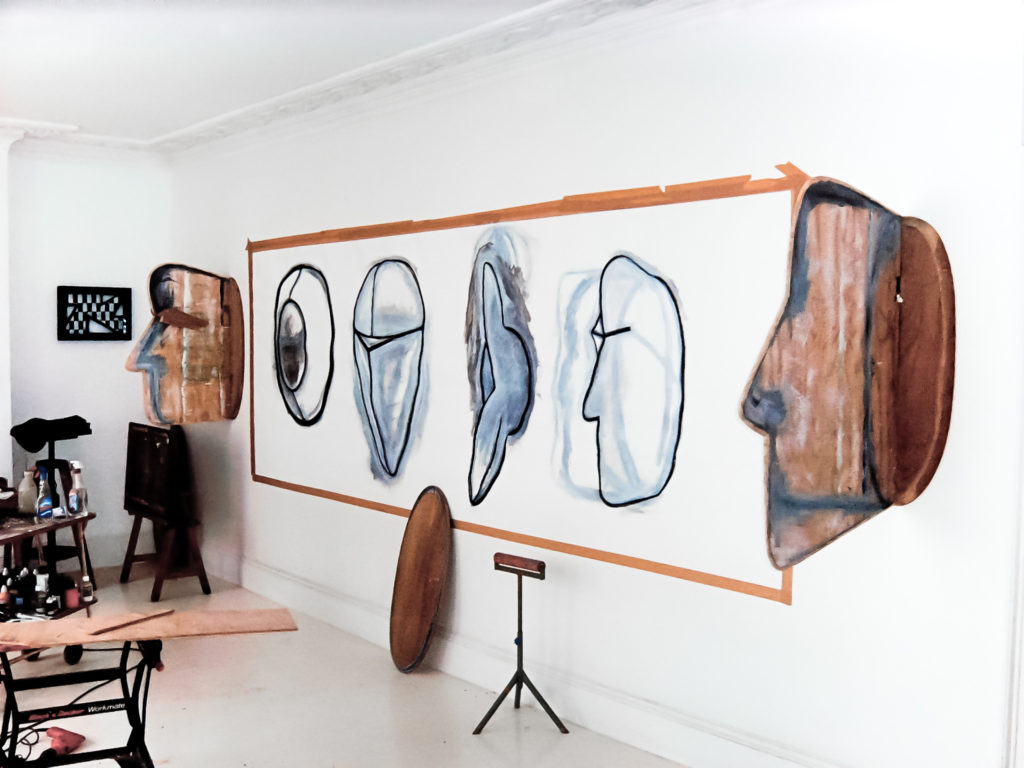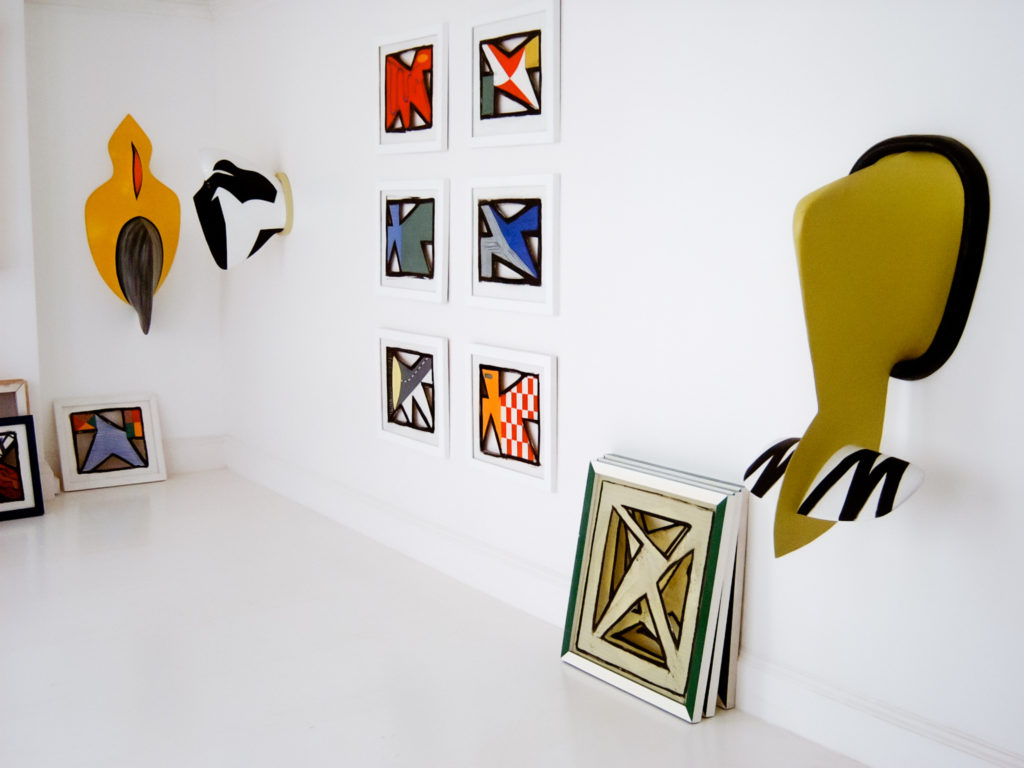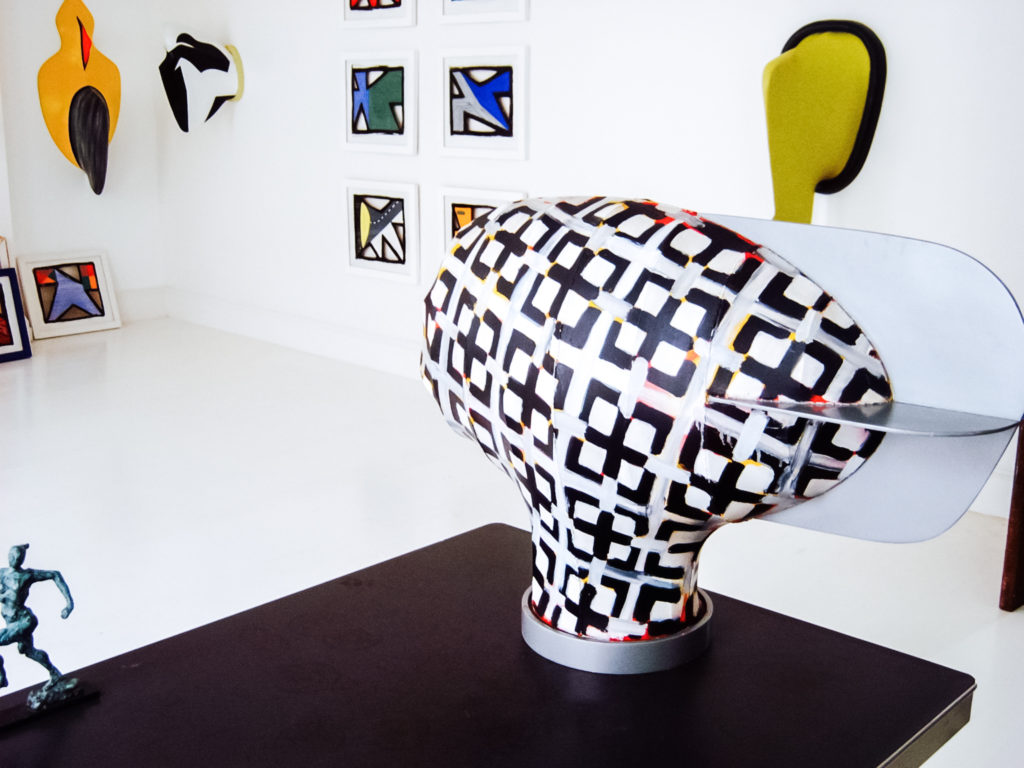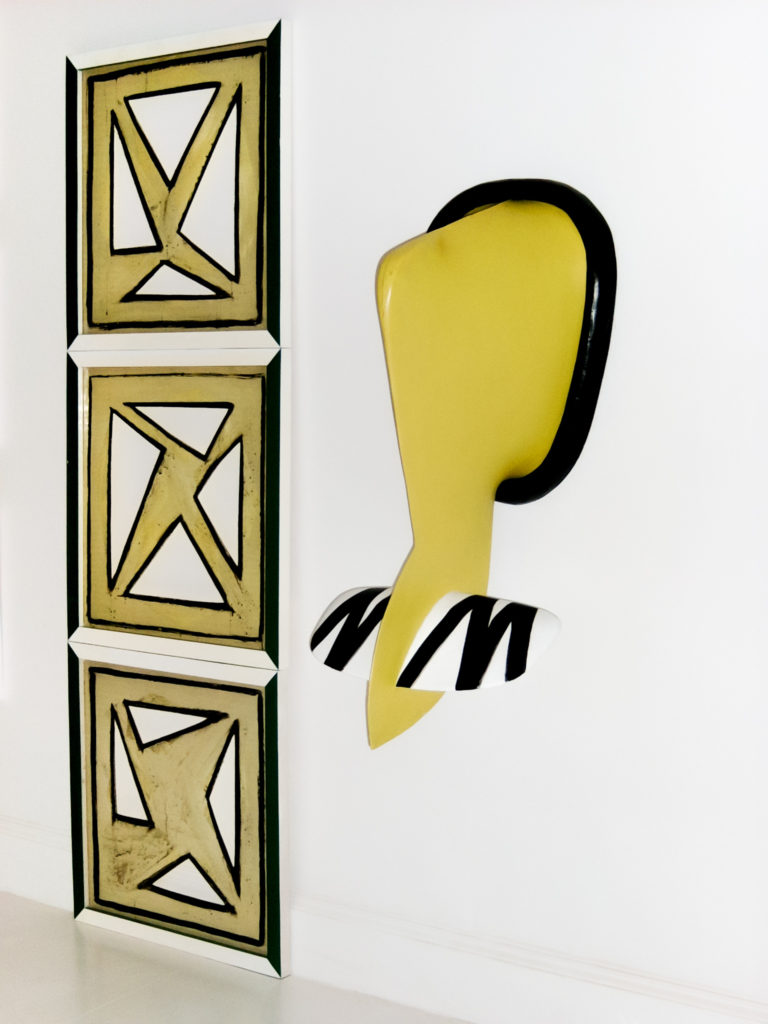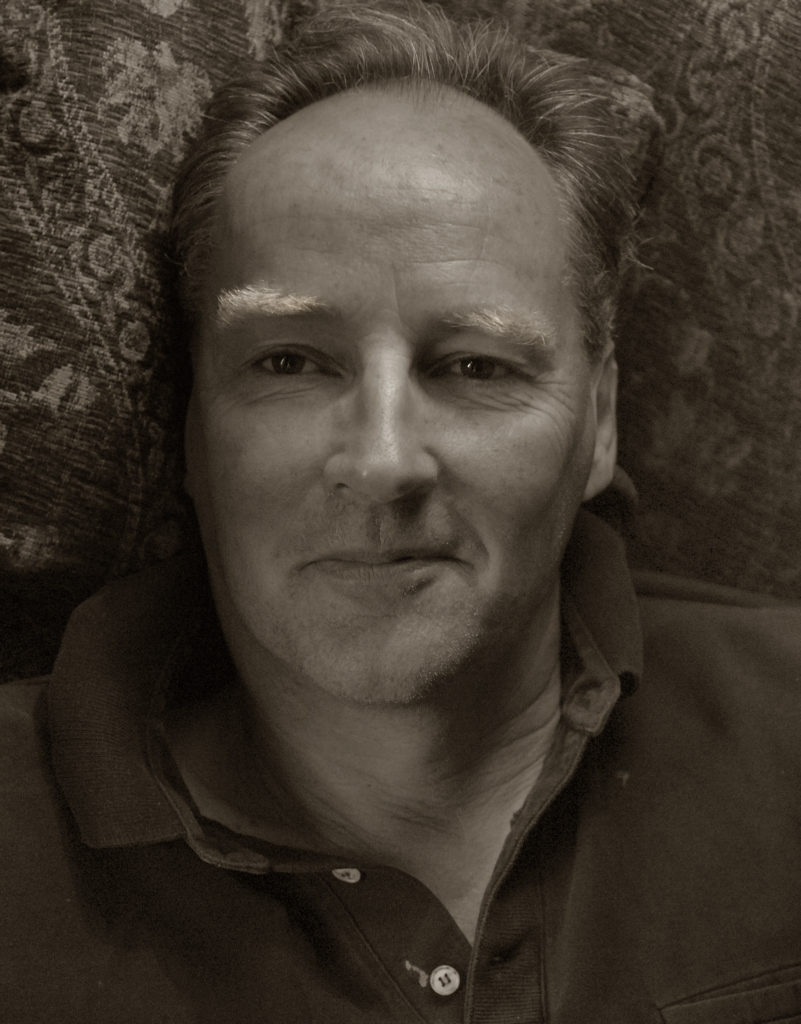
My name is Cornelius van Rijckevorsel, I am originally from the Netherlands, having studied fine art in France, I now reside in the South-West of England.
I have developed a style of painting onto three-dimensional canvasses. I build a structure on which canvas is stretched and sewn – the shape appears to be emerging from the wall and is used as a base for an acrylic painting.
During my time at art school the minimalist movement had reached its peak and our teachers were unsure of what to teach us. We were left very much to our own devices. Luckily we had drawing classes every morning. I am a pupil of Vincent Bioulès who was my fine art teacher in Aix en Provence. I graduated in 1980 in Nice.
Back in Amsterdam I continued developing my 3D paintings. Initially they were just abstract forms, but lately they have developed into faces.
In addition to my three-dimensional paintings, I have made flat work on transparent plastic. The paint is on the inside of the plastic sheet, which also functions as a protective layer for the painting underneath. In addition, these pieces always have four triangle-shaped windows cut out, so they visually interact with the wall they are hung upon.
Usually one loses the initial drawing of a piece underneath layers of paint, but drawing and painting on several layers of transparent plastic, when inverted, one still has the initial drawing on top.
There is a longstanding discussion about the difference of drawing versus painting, and the different sides of our brain we engage. An example is the differences between 19th century artists, Ingres and Delacroix, one more graphic and the other more painterly. A century later Matisse’s lifework was to try to paint and draw at the same time.
Life-drawing remains an important part of my practice. I have worked with models over several years and now I regularly attend drawing classes each week. It often is the case that the faster drawings turn out better than the longer poses.
